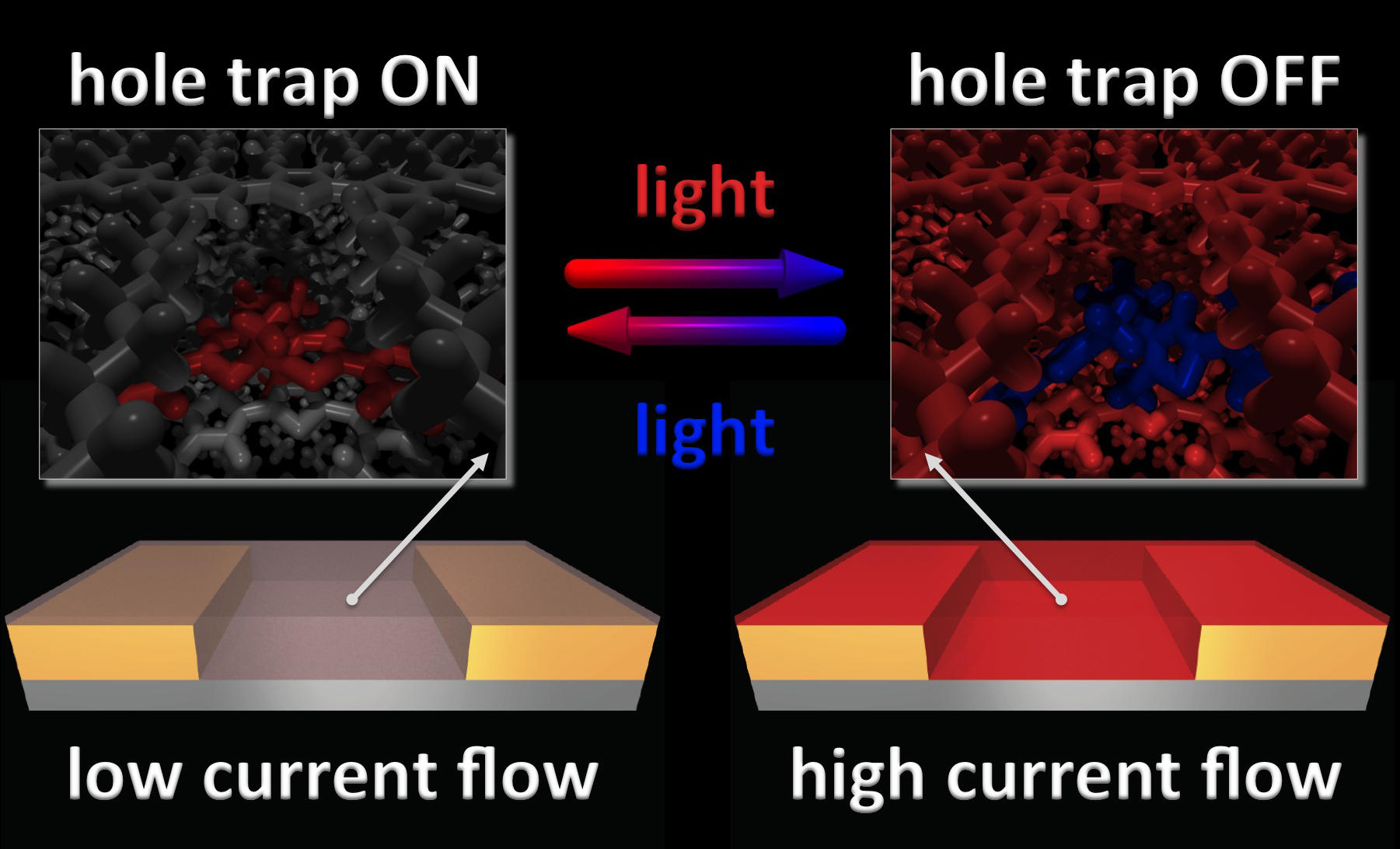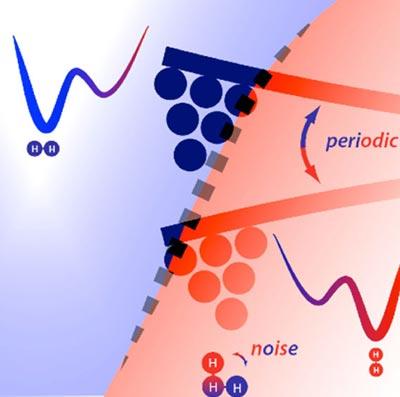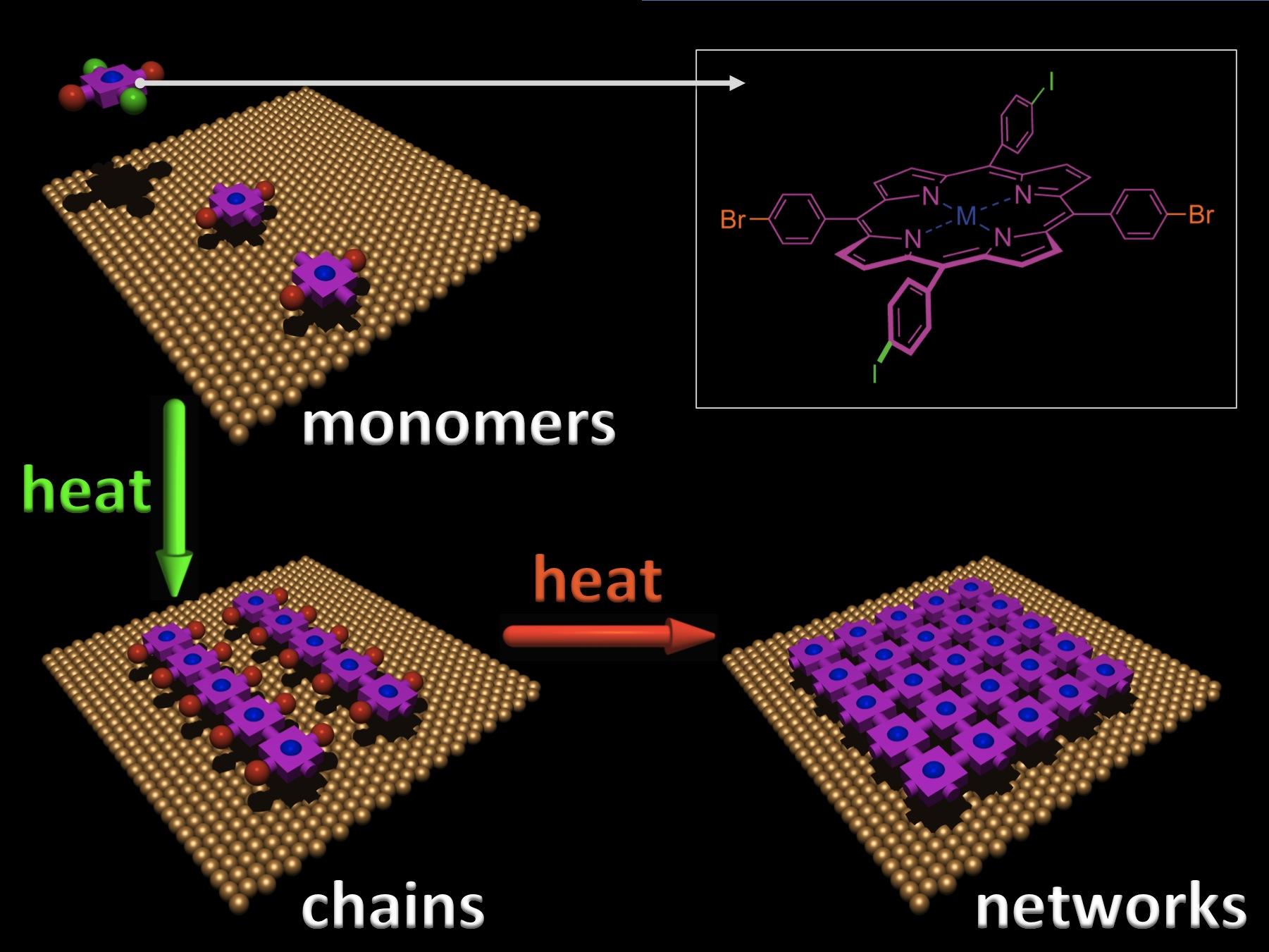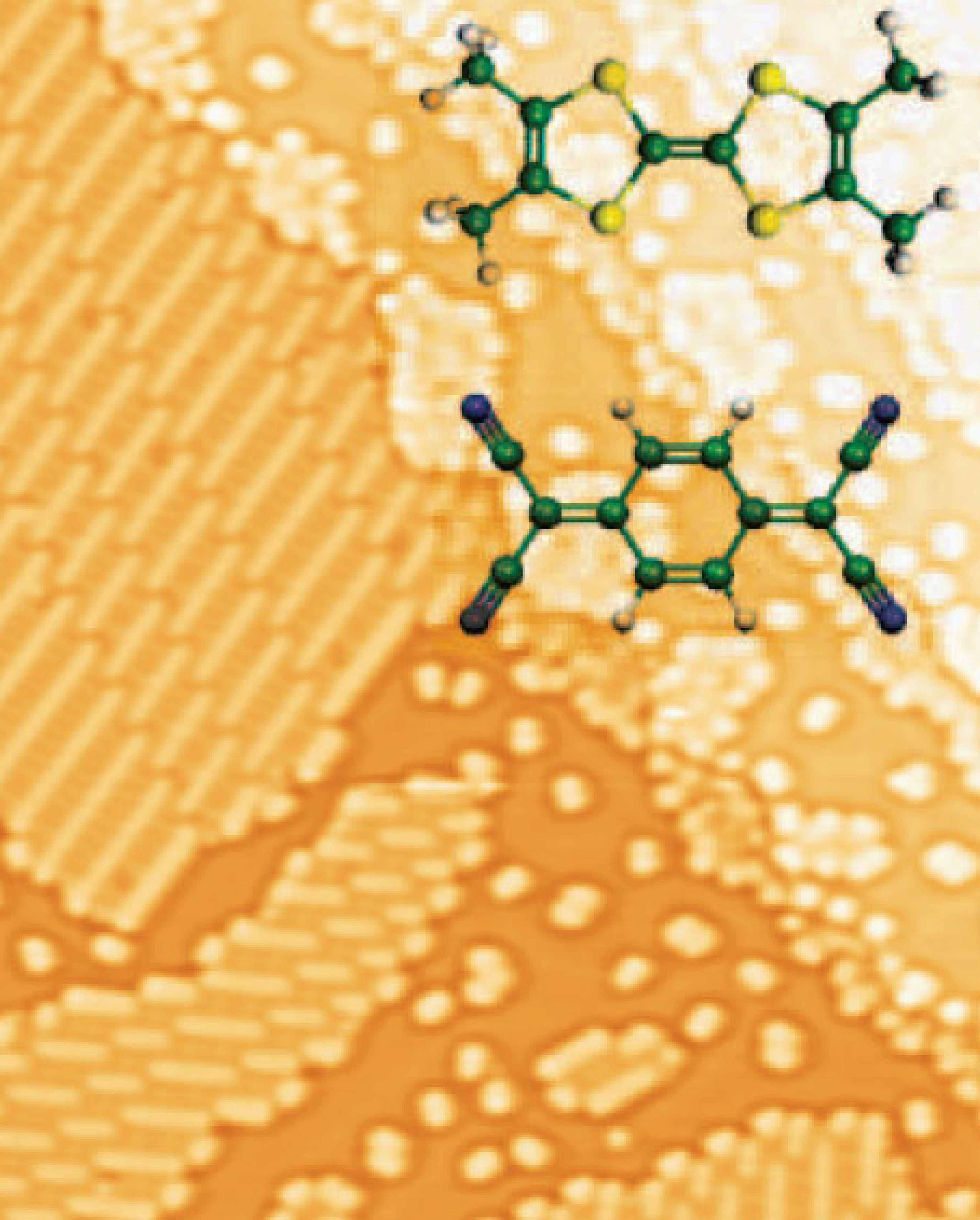2012
2013 2012 2011 2010 2009
Research Highlights: 2012
 |
E. Orgiu, N. Crivillers, M. Herder, L. Grubert, M, Pätzel, J. Frisch, E. Pavlica, D. T. Duong, G. Bratina, A. Salleo, N. Koch, S. Hecht, and P. Samorì Optically switchable transistor via energy-level phototuning in a bicomponent organic semiconductor Nature Chemistry 4, 675 (2012) |
Abstract. Organic semiconductors are suitable candidates for printable, flexible and large-area electronics. Alongside attaining an improved device performance, to confer a multifunctional nature to the employed materials is key for organic-based logic applications. Here we report on the engineering of an electronic structure in a semiconducting film by blending two molecular components, a photochromic diarylethene derivative and a poly(3-hexylthiophene) (P3HT) matrix, to attain phototunable and bistable energy levels for the P3HT's hole transport. As a proof-of-concept we exploited this blend as a semiconducting material in organic thin-film transistors. The device illumination at defined wavelengths enabled reversible tuning of the diarylethene's electronic states in the blend, which resulted in modulation of the output current. The device photoresponse was found to be in the microsecond range, and thus on a technologically relevant timescale. This modular blending approach allows for the convenient incorporation of various molecular components, which opens up perspectives on multifunctional devices and logic circuits.
 |
C. Lotze, M. Corso, K. J. Franke, F. von Oppen, and J. I. Pascual Driving a Macroscopic Oscillator with the Stochastic Motion of a Hydrogen Molecule Science 338, 779 (2012) |
Abstract. Energy harvesting from noise is a paradigm proposed by the theory of stochastic resonances. We demonstrate that the random switching of a hydrogen (H2) molecule can drive the oscillation of a macroscopic mechanical resonator. The H2 motion was activated by tunneling electrons and caused fluctuations of the forces sensed by the tip of a noncontact atomic force microscope. The stochastic molecular noise and the periodic oscillation of the tip were coupled in a concerted dynamic that drives the system into self-oscillation. This phenomenon could be a way for enhancing the transfer of energy from incoherent sources into coherent dynamics of a molecular engine.
 |
L. Lafferentz, V. Eberhardt, C. Dri, C. Africh, G. Comelli, F. Esch, S. Hecht, and L. Grill Controlling on-surface polymerization by hierarchical and substrate-directed growth Nature Chemistry 4, 215 (2012) |
Abstract. A key challenge in the field of nanotechnology, in particular in the design of molecular machines, novel materials or molecular electronics, is the bottom-up construction of covalently bound molecular architectures in a well-defined arrangement. To date, only rather simple structures have been obtained because of the limitation of one-step connection processes. Indeed, for the formation of sophisticated structures, step-by-step connection of molecules is required. Here, we present a strategy for the covalent connection of molecules in a hierarchical manner by the selective and sequential activation of specific sites, thereby generating species with a programmed reactivity. This approach leads to improved network quality and enables the fabrication of heterogeneous architectures with high selectivity. Furthermore, substrate-directed growth and a preferred orientation of the molecular nanostructures are achieved on an anisotropic surface. The demonstrated control over reactivity and diffusion during covalent bond formation constitutes a promising route towards the creation of sophisticated multi-component molecular nanostructures.
 |
N. Severin, P. Lange, I.M. Sokolov, and J. P. Rabe Reversible dewetting of a molecularly thin water film in a soft graphene-mica slit pore Nano Lett. 12 (2), 774-779 (2012) |
Abstract. The behavior of water and other molecular liquids confined to the nanoscale is of fundamental importance, e.g., in biology, material science, nanofluidics, and tribology.(1-4)Direct microscopic imaging of wetting dynamics in subnanometer pores is however challenging. We will show in the following that a molecularly thin water film confined between mica and graphene is fluid. Ambient humidity allows to control the wetting and dewetting of the film. We follow these processes in space and time using scanning force microscopy imaging of the graphene conforming to the film. At sufficiently high humidity a continuous molecularly thin water film wets the interface between the graphene and mica. At lower humidities the film dewets with fractal depressions exhibiting dimensions around 1.7 and depths comparable to the size of a water molecule. The soft graphene cover offers a previously unexplored semihydrophilic slit pore of self-adjustable size, which enables high-resolution imaging of confined molecularly thin fluid films, and bears the potential for the fabrication of novel nanofluidic devices.
 |
I. F. Torrente, D. Kreikemeyer, A. Strózecka, K. J. Franke, and J. I. Pascual Gating the charge state of single molecules by local electric fields Phys. Rev. Lett. 108, 036801 (2012) |
Abstract. The electron-acceptor molecule TCNQ is found in either of two distinct integer charge states when embedded into a monolayer of a charge transfer complex on a gold surface. Scanning tunneling spectroscopy measurements identify these states through the presence or absence of a zero-bias Kondo resonance. Increasing the (tip-induced) electric field allows us to reversibly induce the oxidation or reduction of TCNQ species from their anionic or neutral ground state, respectively. We show that the different ground states arise from slight variations in the underlying surface potential, pictured here as the gate of a three-terminal device.
For a recent overview, including reviews, see Focus Issue "Molecular Switches at Surfaces" in Journal of Physics: Condensed Matter.